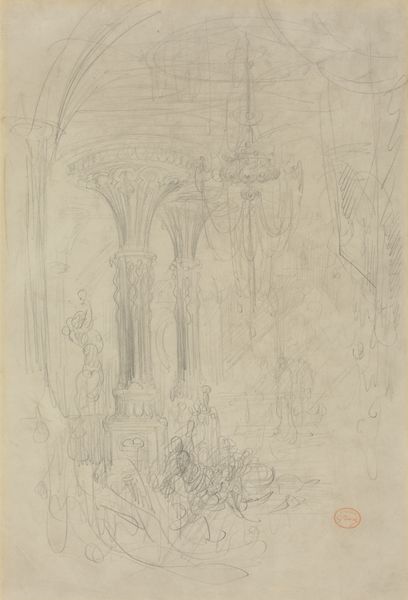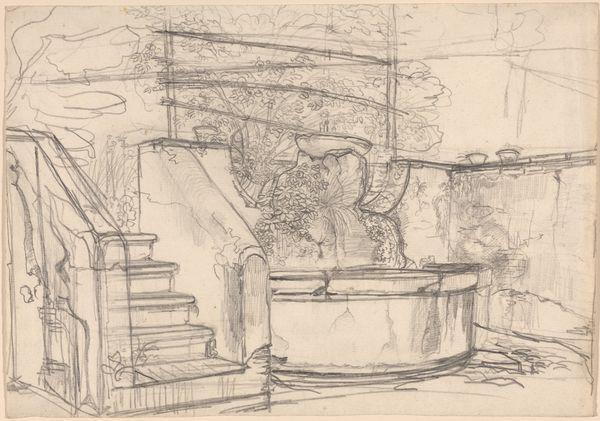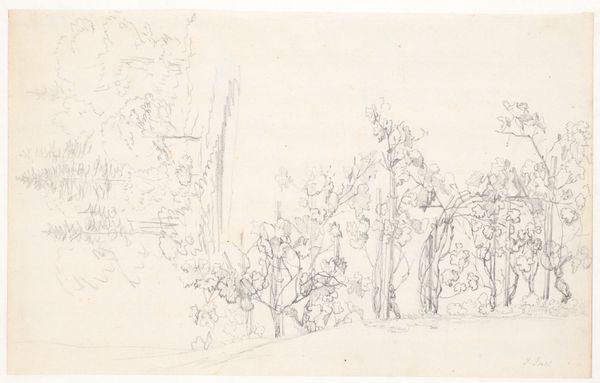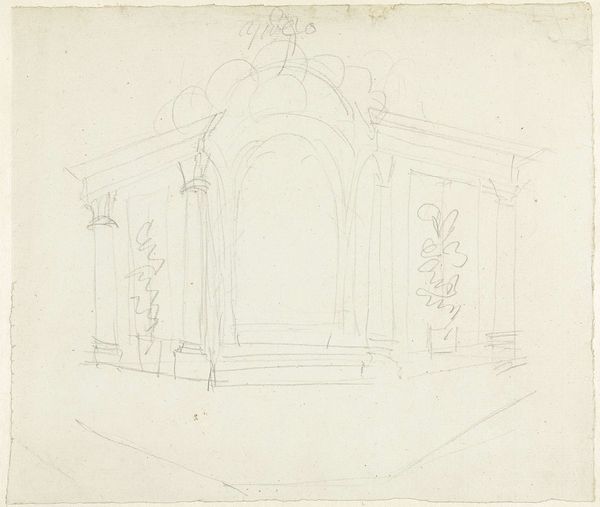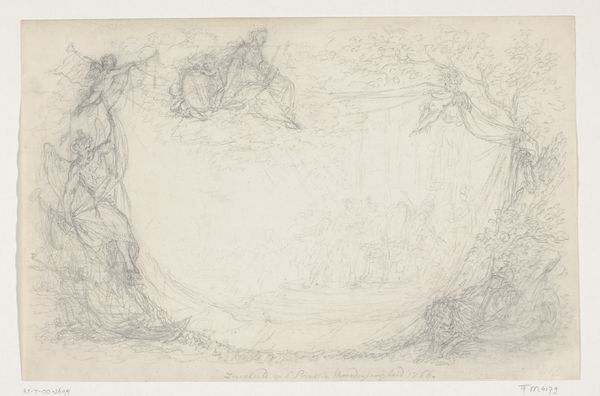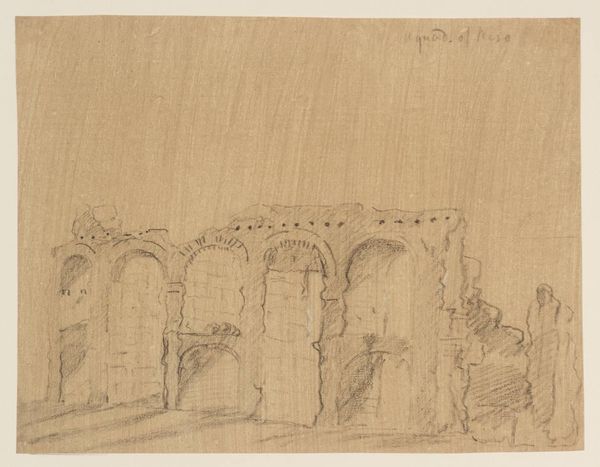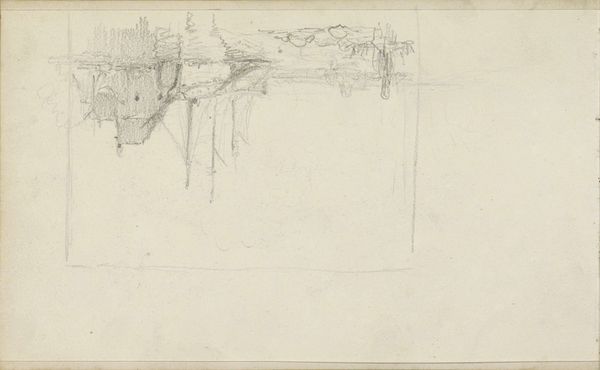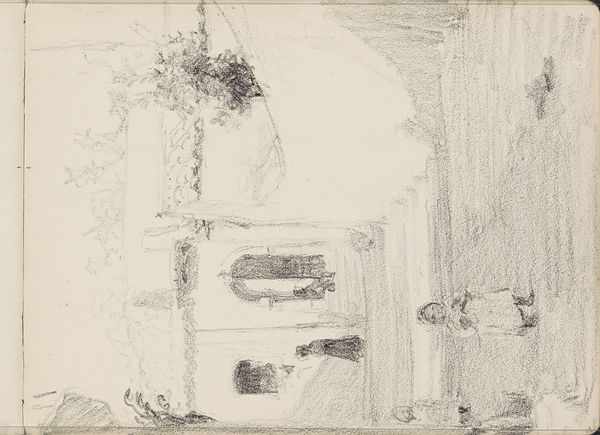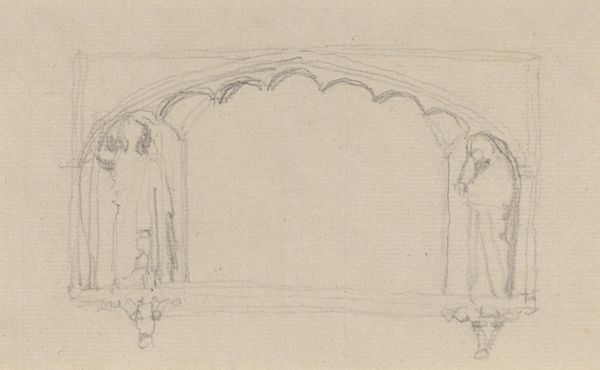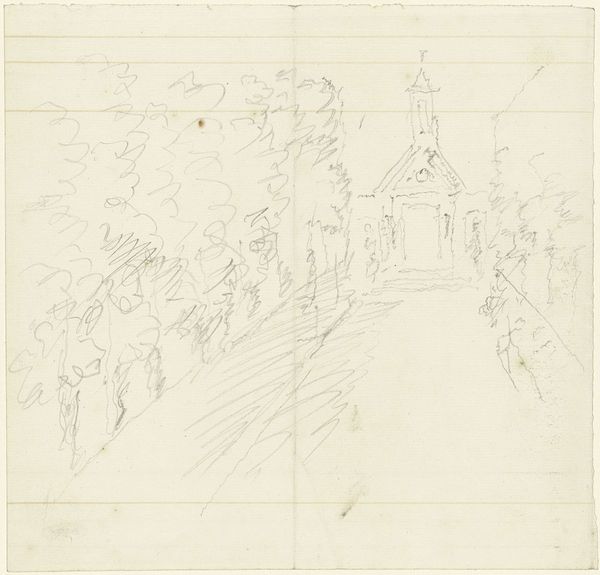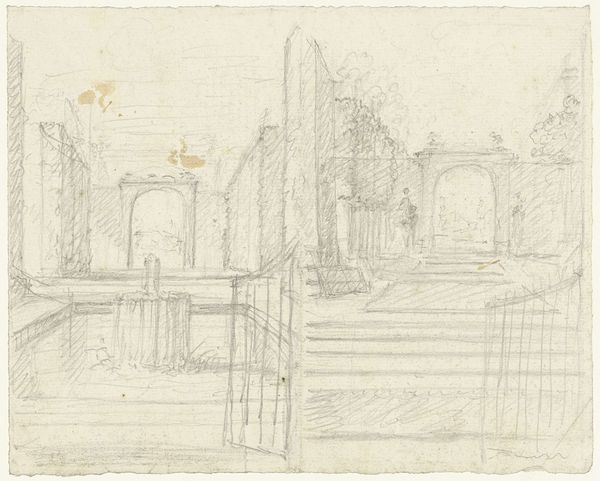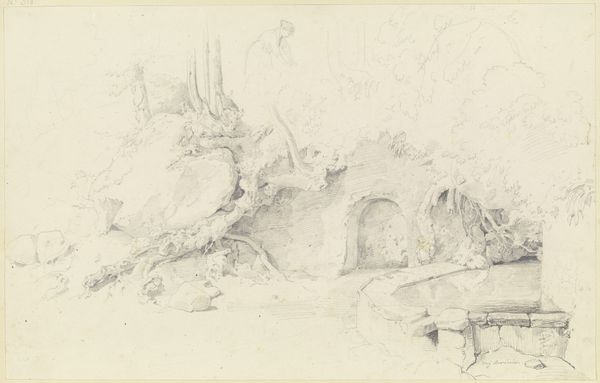
drawing, pencil
#
drawing
#
amateur sketch
#
light pencil work
#
sketch book
#
incomplete sketchy
#
personal sketchbook
#
sketchwork
#
geometric
#
detailed observational sketch
#
pencil
#
sketchbook drawing
#
sketchbook art
#
initial sketch
Copyright: Rijks Museum: Open Domain
Curator: What we have here is a quick study, a pencil drawing titled "Veld met korenschoven," or "Field with Corn Stooks," by Maria Vos, dating from around 1863-1864. Editor: It looks almost… ephemeral. Light, very preliminary. It’s like catching a fleeting impression of something. Curator: Exactly! It's definitely not a finished piece; more likely a page from a sketchbook. You can see the artist was interested in capturing the basic shapes and light effects on the stooks of wheat or hay, probably in preparation for a larger work. Note how she focuses on the mass of the stooks against the field. Editor: It’s interesting how she simplifies the forms. There’s very little detail. It makes me think about the economics of farming at the time, the labor involved in gathering and stacking the harvest. This drawing feels connected to the material realities of agricultural life in the 19th century. What role does such imagery play in building notions of "Dutch" identity and rural life for the period? Curator: That's an excellent point. Images like this contribute to the romanticization of rural labor while often glossing over the harsh conditions. Though, as an initial sketch, one might hesitate to lay too much weight on the imagery. Editor: Maybe, but even an initial sketch has embedded values. Look at the way the scene is framed; the level of visual extraction involved when rendering labor like this… I'm suspicious! What audience is anticipated for a quick and cursory artwork that captures work in progress, and to what extent is the material reality being faithfully presented to them? Curator: I see your point! Perhaps this also relates to the artist’s social position – how did that permit or restrict depictions of certain content matter and production values? Editor: It makes you wonder, doesn't it? Art never exists in a vacuum. This sketch gives us more than just a glimpse of the artist's hand; it offers us a portal into broader socio-economic relationships and cultural ideals as well. Curator: Precisely, and understanding the artist's methods and material choices offers so much information as to this wider perspective, it feels indispensable when considering art through the ages.
Comments
No comments
Be the first to comment and join the conversation on the ultimate creative platform.
